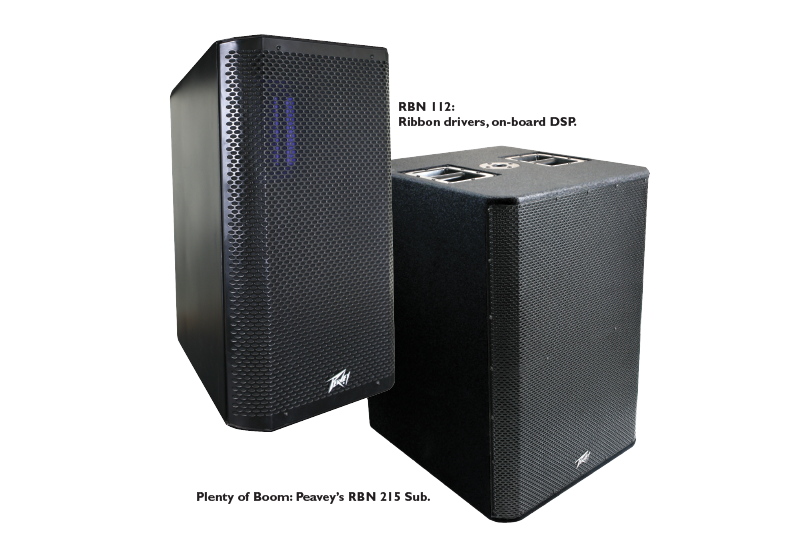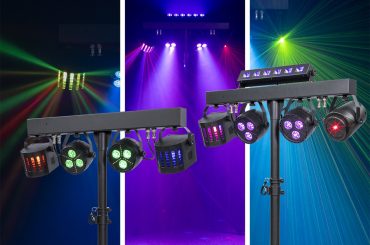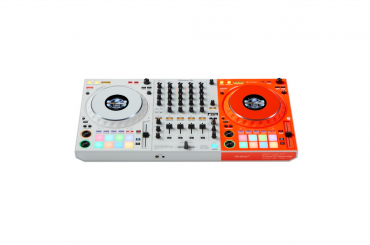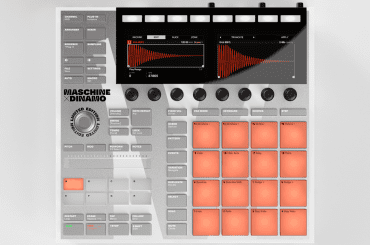For nearly a generation now, powered portable loudspeakers have remained a popular product category for mobile DJs. Compared to most traditional passive speaker/amp systems, many of these active systems generally reflect value for the dollar over excellence in sound quality.
Yet, no matter how skillful and artful the DJ’s talents, it is the speaker system that “has the last word.” As we all wish for having our cake and eating it, too, we would want the precision and sonic quality of a studio monitor with the dynamic range and robustness of permanent-install club speakers – all in a transportable speaker.
Of course, if you throw enough money at most challenges, you can often get what you wish for – and this is the case of Peavey’s RBN 112 self-powered speakers and its powered RBN 215 Sub. The units from the RBN series are competitively priced – a pair of RBN 112s costs about $1,600 (MAP) and an RBN 215 Sub runs about $1,100 (MAP).
Let’s start with the bi-amped RBN 112 full-range speakers. The bass drivers are top-grade with a 12-inch dual-voice coil neodymium woofer with cast aluminum, field-replaceable basket. The high frequencies are handled by a 120-mm (5-inch) ribbon tweeter driving a waveguide (horn flare). Ribbon tweeters are used in critical applications from studio monitors and to Dolby Atmos surround-sound first-run theaters. The typical compression driver/horn is no match for a ribbon’s clarity and definition.
The Tops: The RBN 112’s molded enclosure has side and top handles for easy transportation, multiple fly points, and a bottom pole-mount receptacle. Each unit weighs in at 39 pounds with the following dimensions – 24-inches high, 14-inches wide, and 14-inches deep. The electronics are equally well-equipped with XLR/¼-inch combo inputs, mic/line inputs and even a 3.5-mm input jack. On-board advanced digital signal processing includes compression/limiting, sub-sonic filters, 9-band EQ, and bass enhancement. The rear-panel setup wizard features an LCD screen and built-in VU meter. The power amp boasts 1,500 watts of (combined bi-amp) peak power output.
The Subwoofer: Now we get to the RBN 215 Sub… like the RBN 112, it features two XLR/¼-inch combo inputs, a 3.5-mm input, and a mic/line level selection and 2,000 watts (peak). Each input has sub-sonic filters, a 9-band graphic EQ and delay. Outputs include compressor/limiter and fast high-pass/low-pass filters for crossover function and external subwoofers. Internal temperature monitors plus level and clip indicators and forced fan cooling – a bit noisy when at full tilt fan speed, I would mention. (Editor’s Note: According to Peavey, it’s an issue that “has been addressed” in the most recent editions of the unit.)
The dual 15-inch subwoofer enclosure is constructed of braced 18-mm (5/8-inch) birch plywood, locking casters and heavy-duty steel perforated grille. This subwoofer is tuned down to 36 Hz and deliver’s profuse deep bass.
At about 150 pounds and dimensions of 27.5-inches width, 35-inches height and 24-inches depth, you may require some help moving this guy around. But, again, the unit’s heavy-duty casters certainly help.
And now I pass the system onto Tony “DJ Tonyroxxx” Russell for his field review…
 The DJ Test: I was excited to have the chance to test the new Peavey RBN system, and right off the bat the equipment looked like quality stuff.
The DJ Test: I was excited to have the chance to test the new Peavey RBN system, and right off the bat the equipment looked like quality stuff.
The system has heavy-duty construction and, when you power up the RBN 112 speakers, they look tricked out with the blue light inside highlighting Peaveys ribbon technology. I also received two of the RBN 215 subs.
Let’s start with the 112s. Set up was easy, like it is with most powered PA speakers – you mount them, plug them in and turn them on. There are some nice features on the RBN 112 units, including a bass-boost feature which I used when I took them out for a small gig I had where I used them without the subs.
The amount of sound that comes out of these smallish units is impressive both in the clarity and the amount of bass. There is a built-in EQ, crossover and limiting, so you have a complete package here for many applications.
The RBN 112s worked really nice without the subs – they simply sound great. My only thing I didn’t like (and it’s being very nit-picky) is when there is no sound or a break in the music, the fans on the ribbon units are very loud. (Editor’s Note: Again, Peavey says it’s an issue that’s been corrected.) But then, they aren’t meant to be studio monitors. These speakers can get really loud. On the initial gigs, I wasn’t able to push it anywhere near its full capacity.
Moving to the RBN 215 subwoofer… wow. These things have some serious boom. I took them to a New Year’s party and this is what it’s all about – great lows, and I couldn’t push them to their max on this night. It was just too much power for this particular gig, but I could tell I had plenty of overhead to spare. This does not happen often when testing DJ gear!
Both speakers and subs come with two channels inputs, the EQ, thru outputs and most everything you would expect to see on these type of speakers. What I liked about them was the rock-solid construction and the combination of great sound with plenty of power.
The verdict? With this RBN system, Peavey has a winning set-up here in my book.
If you have any questions for Sounding Off, please send them to djtimes@testa.com.








